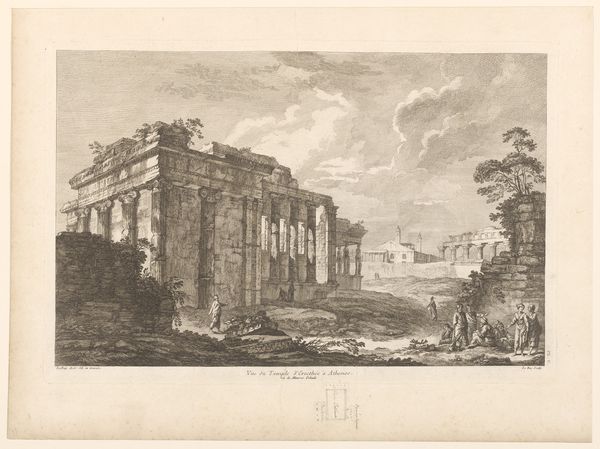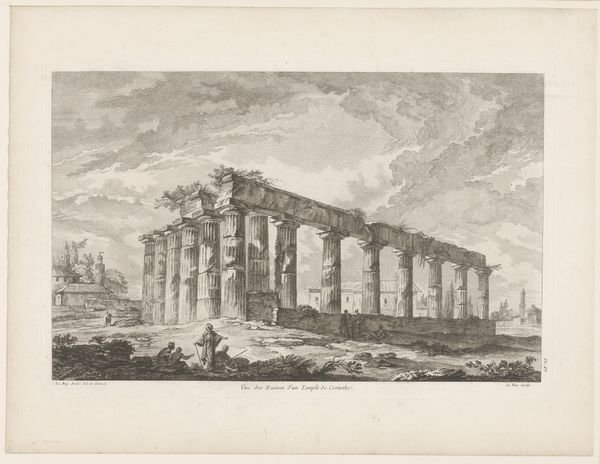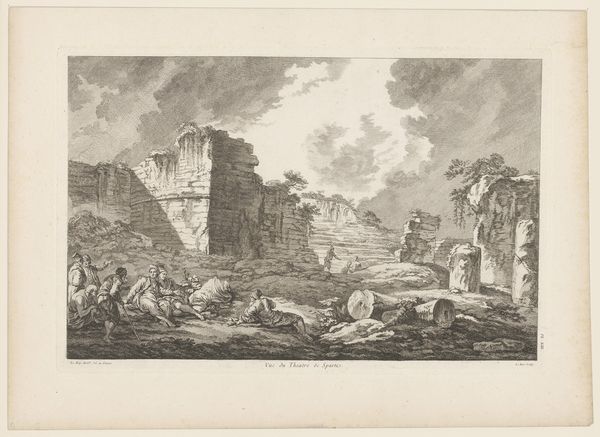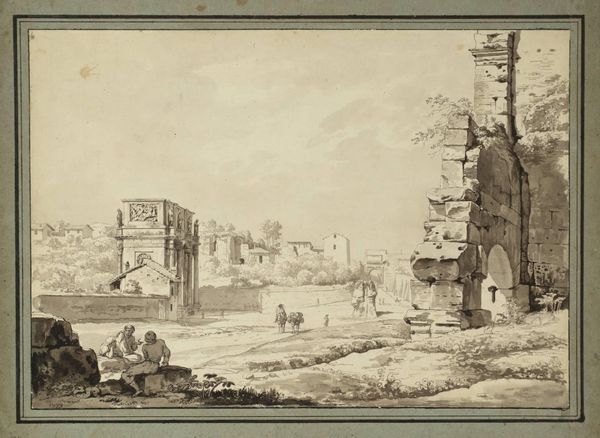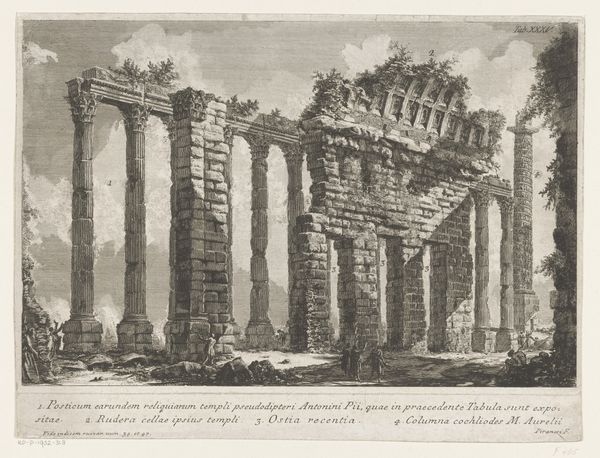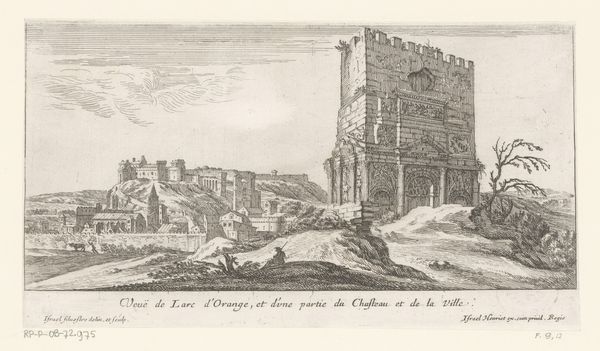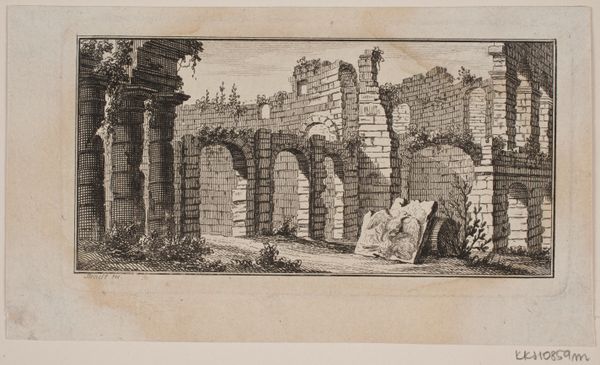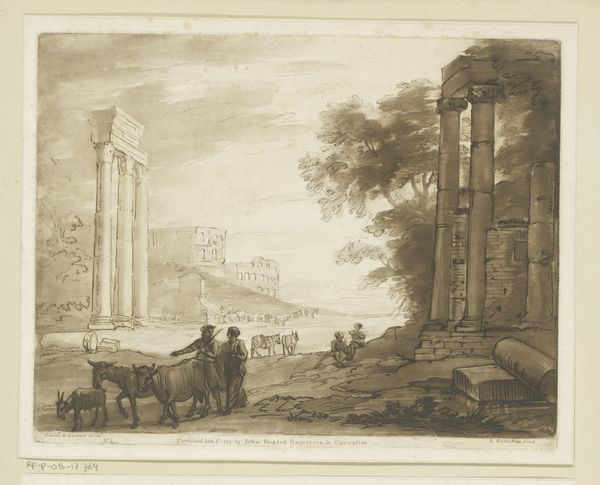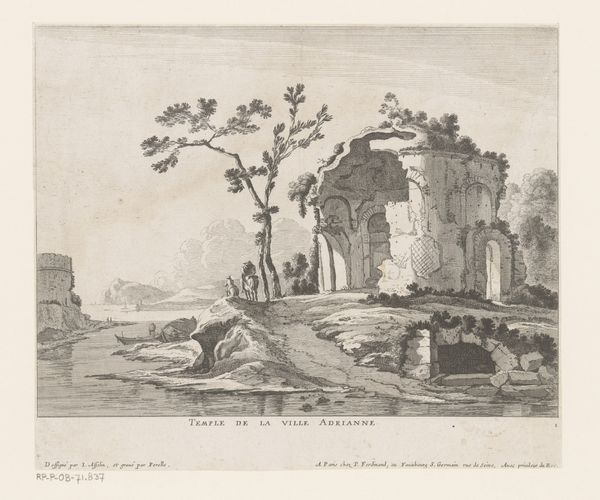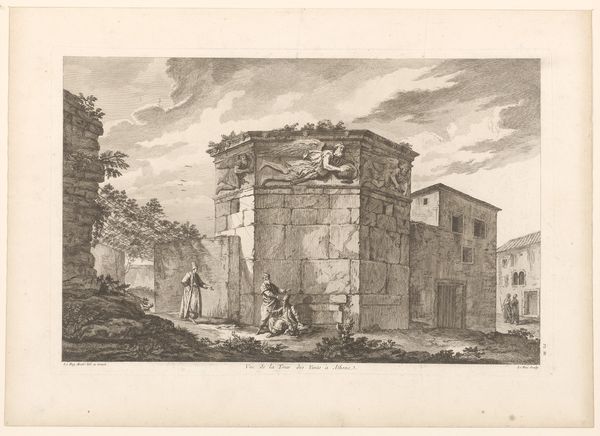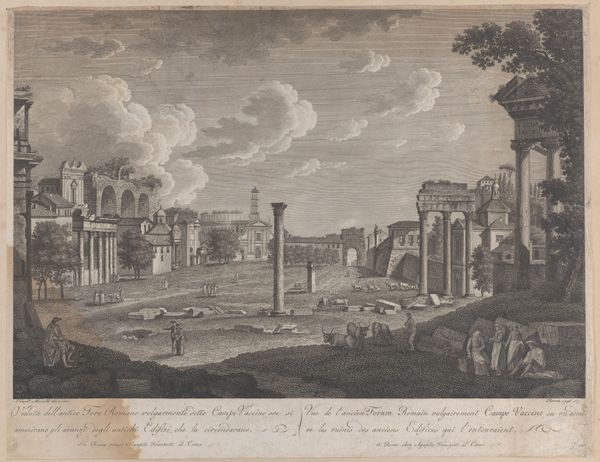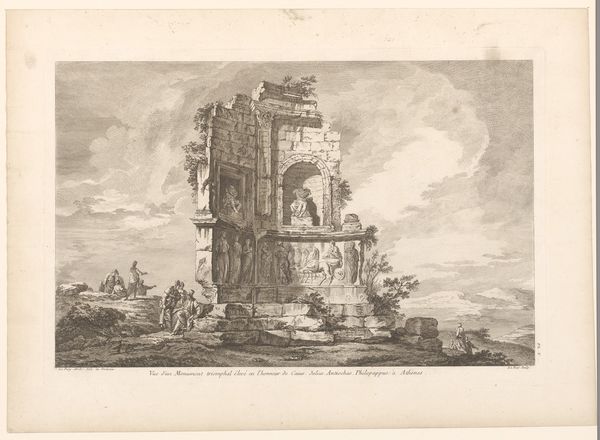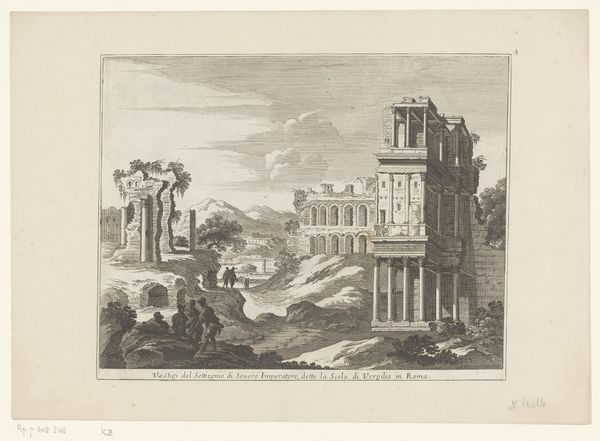
print, engraving, architecture
#
ink paper printed
# print
#
greek-and-roman-art
#
old engraving style
#
landscape
#
ancient-mediterranean
#
19th century
#
cityscape
#
academic-art
#
engraving
#
architecture
Dimensions: height 306 mm, width 463 mm
Copyright: Rijks Museum: Open Domain
Editor: This is Jacques Philippe Le Bas’ 1758 engraving, "Gezicht op de Propyleeën van de Akropolis van Athene." The cool tones and meticulous detail give the scene a certain… solemnity, despite the figures scattered about. How do you read the composition of this print? Curator: The structural elements are particularly compelling here. Note how the receding columns of the Propylaea create a powerful sense of perspective. Le Bas employs line work masterfully to differentiate between the solidity of the ruins and the ephemerality of the sky. What is the effect of the human figures placed asymmetrically in the foreground? Editor: They seem a bit like a compositional device, maybe to give scale to the grand architecture? Do you see any interplay between the ruinous state of the building and the people who are enjoying themselves? Curator: Precisely! The human presence serves as a counterpoint, underscoring the temporal distance between the viewer and the depicted classical era. Also, the lines of the figures direct the eye up to the more vertical architectural forms, emphasizing their majesty. Do you observe a calculated contrast? Editor: Absolutely, the foreground figures really draw us into that sense of depth with their placement. Curator: This creates a carefully staged drama. The relationship between vertical architectural remains, human shapes, and ground forms yields to further thought. Editor: I never considered the formal impact the contrast had, especially with how he's using lines. I will remember that. Curator: Indeed, the strength of Le Bas’ print lies not merely in its representational accuracy, but also its dynamic compositional arrangement.
Comments
No comments
Be the first to comment and join the conversation on the ultimate creative platform.
